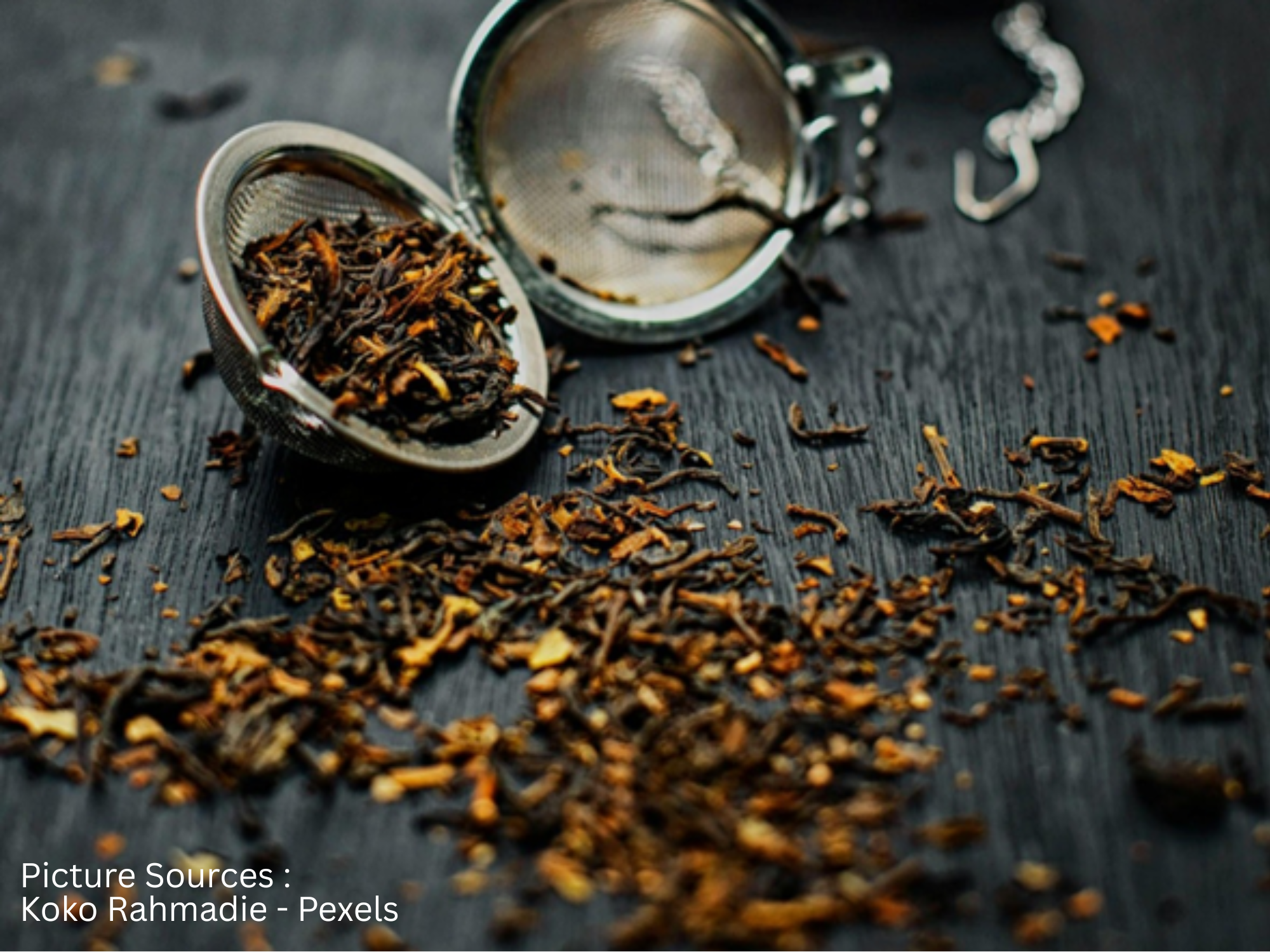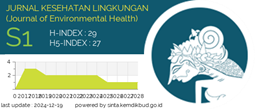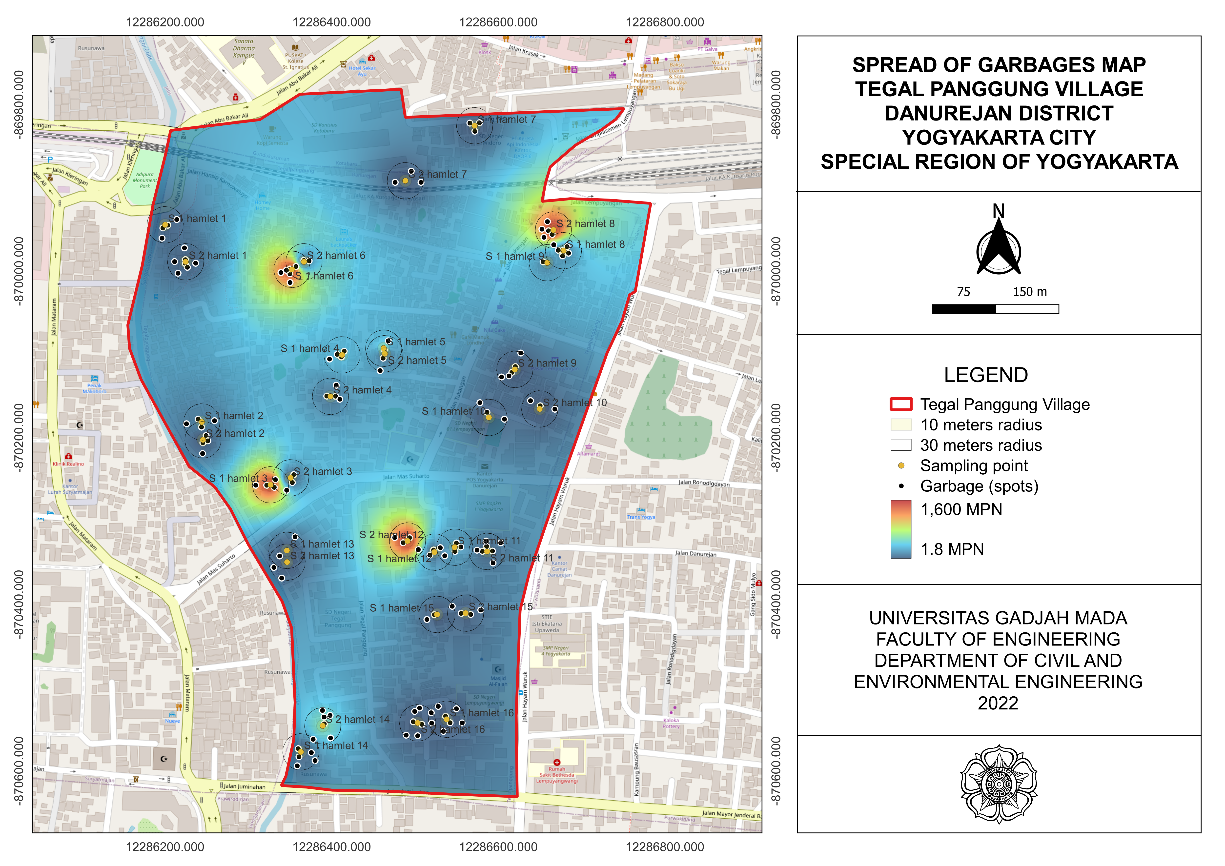Mitigating Waterborne Health Risks Through Malachite Green Biosorption Using Tea Waste-Derived Material

Introduction: Malachite green (MG) is a synthetic dye extensively used in the textile and aquaculture industries, known for its toxicity, bioaccumulation potential, and environmental persistence which poses significant public health risks. This study investigates the biosorption performance of raw tea waste (RTW) and iron-coated tea waste (FeTW) for MG removal as a low-cost and sustainable water treatment solution. Methods: A laboratory-based batch biosorption experiment was conducted under parameters of contact time, biosorbent dosage and initial MG concentration using biosorbents of RTW and FeTW. The MG removal efficiency was quantified using a Hach DR900 spectrophotometer. Functional group characterization was conducted via FTIR spectroscopy, and adsorption behaviours were analysed using Langmuir and Freundlich isotherm models. Results and Discussion: FeTW demonstrated superior performance compared to RTW under all conditions. A maximum removal efficiency of 68.54% was achieved using 0.5g of FeTW at an initial MG concentration of 25mg/L within 60minutes. FTIR analysis revealed enhanced hydroxyl group intensity at 3360cm⁻¹ and the appearance of Fe–O bonds at 560cm⁻¹, confirming successful surface modification. The Langmuir isotherm model best described the biosorption behavior with R² of 0.9901 and maximum biosorption capacity (qm) of 3.12mg/g. The low separation factor (RL) value of 0.00025 indicated highly favorable biosorption. Conclusion: These findings demonstrate the potential of FeTW as an eco-friendly biosorbent to reduce human exposure to MG, a known carcinogenic contaminant in water systems. Iron modification significantly enhances the biosorption capacity of tea waste for MG removal and contributes to safer water quality and reduced public health risks.
Al-Tohamy R, Ali SS, Li F, Okasha KM, Mahmoud YAG, Elsamahy T, et al. A Critical Review on The Treatment of Dye-Containing Wastewater: Ecotoxicological and Health Concerns of Textile Dyes and Possible Remediation Approaches for Environmental Safety. Ecotoxicology and Environmental Safety. 2022;231(113160):1-17. https://doi.org/10.1016/j.ecoenv.2021.113160
Roy M, Saha R. Dyes and Their Removal Technologies from Wastewater: A Critical Review. In: Intelligent Environmental Data Monitoring for Pollution Management. Elsevier eBooks; 2021; 127–160.https://doi.org/10.1016/b978-0-12-819671-7.00006-3
Nassar S, Sayed AEDH, Allam NN, Ali MM, Mohamed EM. Bioremediation of the Toxic Effects Induced by The Malachite Green Dye in Clarias Gariepinus Using Rhodotorula Mucilaginosa. Scientific African. 2024;26(e02496): 1-14.
https://doi.org/10.1016/j.sciaf.2024.e02496
Farhadian S, Hashemi-Shahraki F, Amirifar S, Asadpour S, Shareghi B, Heidari E, et al. Malachite Green, the Hazardous Materials that Can Bind to Apo-Transferrin and Change the Iron Transfer. International Journal of Biological Macromolecules. 2022;194:790–799. https://doi.org/10.1016/j.ijbiomac.2021.11.126
International Agency for Research on Cancer. Malachite Green and Leucomalachite Green. Gentian Violet, Leucogentian Violet, Malachite Green, Leucomalachite Green, and CI Direct Blue 218. NCBI Bookshelf; 2022. https://www.ncbi.nlm.nih.gov/books/NBK594611
Fakhri Y, Mahmoudizeh A, Hemmati F, Adiban M, Esfandiari Z, Mousavi KA. The Concentration of Malachite Green in Fish: A Systematic Review, Meta-Analysis, and Probabilistic Risk Assessment. International Journal of Environmental Health Research. 2025;1–16. https://doi.org/10.1080/09603123.2025.2453971
Khan MD, Singh A, Khan MZ, Tabraiz S, Sheikh J. Current Perspectives, Recent Advancements, and Efficiencies of Various Dye-Containing Wastewater Treatment Technologies. Journal of Water Process Engineering. 2023;53(103579): 1-21. https://doi.org/10.1016/j.jwpe.2023.103579
Fu Z, Chen Z, Yang L, Wang H, Xie J, Ding Z. A RhB@Tb-MOF Sensor for Selective Detection of Malachite Green and Leucomalachite Green. Journal of Food Composition and Analysis. 2025;140(107311):1-21. https://doi.org/10.1016/j.jfca.2025.107311
Abid LH, Mussa ZH, Deyab IF, Al-Ameer LR, Al-Saedi HFS, Al-Qaim FF, et al. Walnut Shell as A Bio-Activated Carbon for Elimination of Malachite Green from its Aqueous Solution: Adsorption Isotherms, Kinetics and Thermodynamic Studies. Results in Chemistry. 2025;14(102124):1-10. https://doi.org/10.1016/j.rechem.2025.102124
Mbuyazi TB, Ajibade PA. Enhanced Photocatalytic Degradation of Malachite Green and Trypan Blue Using 3-Aminopropyl Triethoxysilane (APTES) Functionalized Iron Oxide Nanocomposite. RSC Advances. 2025;15(8):6400–6412. https://doi.org/10.1039/d4ra09025j
Rachma US, Adriyani R, Husnina Z, Farumi SS. Literature Review: Water Quality of Public Bathing, Potential Health Problems and Water Borne Diseases on Visitors. Jurnal Kesehatan Lingkungan. 2021;13(2):102-112. https://doi.org/10.2w0473/jkl.v13i2.2021.102-112
El HAYA, Hejji L, Seddik NB, Azzouz A, Pérez-Villarejo L, Stitou M, et al. Remediation of Malachite-green Dye from Textile Wastewater Using Biosorbent Almond Shell-based Cellulose.Journal of Molecular Liquids. 2024;399(124435):1-11. https://doi.org/10.1016/j.molliq.2024.124435
Perendija J, Ljubić V, Popović M, Milošević D, Arsenijević Z, Đuriš M, et al. Assessment of Waste Hop (Humulus Lupulus) Stems as A Biosorbent for The Removal of Malachite Green, Methylene Blue, And Crystal Violet from Aqueous Solution in Batch and Fixed-Bed Column Systems: Biosorption Process and Mechanism. Journal of Molecular Liquids. 2023;394(123770):1-19. https://doi.org/10.1016/j.molliq.2023.123770
Namira KP, Lilis S, Iva REW. Adsorption Kinetics of Banana Stem Activated Carbon in Reducing Phosphate Levels Jurnal Kesehatan Lingkungan. 2024;16(1):51–58. https://doi.org/10.20473/jkl.v16i1.2024.51-58
Murugesan SR, Sivakumar V, Velusamy S, Ravindiran G, Sundararaj P, Maruthasalam V, et al. Biosorption of Malachite Green from Aqueous Phase by Tamarind Fruit Shells Using FBR. Advances in Materials Science and Engineering. 2022; 2022(8565524): 1-7. https://doi.org/10.1155/2022/8565524
Christopher JJ, Lydia IS, Sathiyan A, Princy Merlin J. Fabrication of Cu3Mo2O9 Doped MWCNT Nanocomposites as Efficient Photocatalyst for Malachite Green Dye Degradation. Optical Materials. 2024;156(115935):1-13. https://doi.org/10.1016/j.optmat.2024.115935.
Mandale P, Kulkarni K, Jadhav K, Kulkarni A, Mahajan R. Adsorption of Malachite Green Dye from Aqueous Solution on Bioadsorbent as Low-Cost Adsorbent. Materials Today Proceedings. 2024;1-9 https://doi.org/10.1016/j.matpr.2024.01.048
Abbasi F, Mansouri M, Tanzifi M, Ebrahimi F, Sadeghizadeh A. The Modified Pomegranate Peel as An Economical and Highly Effective Adsorbent for Malachite Green Dye Removal from Wastewater. Colloids and Surfaces C: Environmental Aspects. 2024;2(100040):1-8. https://doi.org/10.1016/j.colsuc.2024.100040
Duarah P, Purkait MK. Fenton Oxidation-Activated Hydrochar Derived from Factory Tea Waste with Enhanced Surface Area as A Sustainable Adsorbent for Multiple Dyes. Colloids and Surfaces a Physicochemical and Engineering Aspects. 2025;715(136635):1-15. https://doi.org/10.1016/j.colsurfa.2025.136635
Marpongahtun, Andriayani, Muis Y, Gea S, Amaturrahim SA, Attaurrazaq B, et al. Biomass-derived N-doped Carbon Dots/TiO2 for Visible-Light-Induced Degradation of Methyl Orange in Wastewater. Chemistry Africa. 2024;7(6):3319–3328. https://doi.org/10.1007/s42250-024-00970-x
Wu J, Annath H, Chen H, Mangwandi C. Upcycling Tea Waste Particles into Magnetic Adsorbent Materials for Removal of Cr(VI) from Aqueous Solutions. Particuology. 2022;80:115–126. https://doi.org/10.1016/j.partic.2022.11.017
Abdullah NH, Borhan A, Saadon SZAH. Biosorption of Wastewater Pollutants by Chitosan-based Porous Carbons: A Sustainable Approach for Advanced Wastewater Treatment. Bioresource Technology Reports. 2023;25(101705):1-22. https://doi.org/10.1016/j.biteb.2023.101705
Khir NHM, Salleh NFM, Ghafar NA, Shukri NM. Mitigating Health Risks Through Biosorption: Effective Removal of Nickel (II) and Chromium (VI) from Water with Acid-Treated Potato Peels Jurnal Kesehatan Lingkungan. 2024;16(4):312–320. https://doi.org/10.20473/jkl.v16i4.2024.312-320
Debnath S, Das R. Strong Adsorption of CV Dye by Ni Ferrite Nanoparticles for Waste Water Purification: Fits Well the Pseudo Second Order Kinetic and Freundlich Isotherm Model. Ceramics International. 2023;49(10): 16199-16215. https://doi.org/10.1016/j.ceramint.2023.01.218
Correa-Navarro YM, Rivera-Giraldo JD, Murcia-García JD. Isotherm and Kinetic Data for Adsorption of Butylparaben Onto Biochars Derived from Fique Bagasse. Data in Brief. 2024;57(111113):1-8. https://doi.org/10.1016/j.dib.2024.111113
Naveen KV, Sathiyaseelan A, Mandal S, Han K, Wang MH. Unveiling the Structural Characteristics and Bioactivities of the Polysaccharides Extracted from Endophytic Penicillium sp. Molecules. 2023;28(5788):1-19. https://doi.org/10.3390/molecules28155788
Liu X, Renard CMGC, Bureau S, Le Bourvellec C. Revisiting the Contribution of ATR-FTIR Spectroscopy to Characterize Plant Cell Wall Polysaccharides. Carbohydrate Polymers. 2021;262(117935):1-10. https://doi.org/10.1016/j.carbpol.2021.117935
Selvaraj R, Murugesan G, Rangasamy G, Bhole R, Dave N, Pai S, et al. As (III) Removal Using Superparamagnetic Magnetite Nanoparticles Synthesized Using Ulva Prolifera − optimization, Isotherm, Kinetic and Equilibrium Studies. Chemosphere. 2022;308(136271):1-12. https://doi.org/10.1016/j.chemosphere.2022.136271
Alabi AH, Akano OR, Ekele WK, Olanrewaju CA, Oladoye PO, Obayomi KS. Biosorptive Removal of Toxic Nitrate Ion from Wastewater Using Albizia Lebbeck Seed Pods: Isotherm and Equilibrium Studies. Journal of the Indian Chemical Society. 2024;101(101353):1-10. https://doi.org/10.1016/j.jics.2024.101353
Cao W, Wu D, Xiao P. Synthesis of Chitosan-Glutaraldehyde/Activated Carbon Composite for Methylene Blue Adsorption: Optimization and Mechanisms. Desalination and Water Treatment. 2022;270:275–288. https://doi.org/10.5004/dwt.2022.28793
Wang J, Huang X, Chen Z, Chen N, Yang M, Liang C, et al. Extraction and Purification of Total Flavonoids from Zanthoxylum Planispinum Var. Dintanensis Leaves and Effect of Altitude on Total Flavonoids Content. Scientific Reports. 2025;15(1):1-15. https://doi.org/10.1038/s41598-025-91528-5
Hajiaghababaei L, Mazloomifar A, Khalilian F, Farahani GT. Functionalization Of Magnetic Nanoparticles with 1-cyclopropyl-6-fluoro-4-oxo-7-(piperazin-1-yl)-1,4-dihydroquinoline-3-carboxylic acid As an Efficient Adsorbent for The Gefitinib Removal from Water. Scientific Reports. Jurnal Kesehatan Lingkungan/10.20473/jkl.v17i3.2025.201-209 Vol. 17 No.3 July 2025 (201-209) 209 2025;15(5905):1-15.https://doi.org/10.1038/s41598-025-89641-6
Poopal RK, Ashwini R, Ramesh M, Li B, Ren Z. Triphenylmethane Dye (C52H54N4O12) is Potentially a Hazardous Substance in Edible Freshwater Fish at Trace Level: Toxicity, Hematology, Biochemistry, Antioxidants, and Molecular Docking Evaluation Study. Environmental Science and Pollution Research. 2022;30(11):28759–28779. https://doi.org/10.1007/s11356-022-24206-y
Himanshu, Behera B, Kumari N, Maruthi M, Singh RK, Saini JK. Appraisal Of Malachite Green Biodegradation and Detoxification Potential of Laccase from Trametes Cubensis. Bioresource Technology. 2024;417(131869)1-10.
https://doi.org/10.1016/j.biortech.2024.131869
Ahmad A, Jamil SNAMd, Choong TSY, Abdullah AH, Faujan NH, Adeyi AA, et al. Removal of Cationic Dyes by Iron Modified Silica/Polyurethane Composite: Kinetic, Isotherm and Thermodynamic Analyses, and Regeneration Via Advanced Oxidation Process. Polymers. 2022;14(5416):1-23. https://doi.org/10.3390/polym14245416
Md Salim R, Asik J, Sarjadi MS. Chemical Functional Groups of Extractives, Cellulose and Lignin Extracted from Native Leucaena Leucocephala Bark. Wood Science and Technology. 2021;55(2):295–313. https://doi.org/10.1007/s00226-020-01258-2
Gong M, Xu F, Liu P, Xu Q, Su Y, Fan Y, et al. A review of biomass hydrochar as an adsorbent: Performance, modification, and applications. Journal of Water Process Engineering. 2025;71(107314)1-20. https://doi.org/10.1016/j.jwpe.2025.107314
Kali A, Dehmani Y, Amar A, Loulidi I, El-kordy A, Jabri M, et al. Almond Shells Based-lignocellulosic Waste Materials for A High Removal Efficacy of Chromium (VI) Ions from Waste Water. Interactions. 2025;246(1):1-20. https://doi.org/10.1007/s10751-025-02264-1
Alzura SP, Saraswaty V, Ishmayana S, Budiman YP, Eddy DR, Aji ES, et al. Synthesis and Characterization of Zinc Oxide Nanoparticles-carbon Composite Derived from Pineapple Peel Wastes for Adsorption of Methylene Blue from Solution and Photocatalytic Activity. Case Studies in Chemical and Environmental Engineering. 2025;11(101113)1-10. https://doi.org/10.1016/j.cscee.2025.101113
Abdul Aziz A, Osman MS, Wan Rasdi N, Shafie FA, Feisal NAS, Zaki MA, et al. Assessing Microplastic Contamination in Shellfish: Insights from Pantai Remis Kuala Selangor, Strait of Malacca, Malaysia. Jurnal Kesehatan Lingkungan. 2024;16(4):321–330. https://doi.org/10.20473/jkl.v16i4.2024.321-3
Ibrahim TNB, Jesi AA, Feisal NAS, Windusari Y, Samat NA, Kamaludin NH, et al. Klang River Water Quality Assessment and its Effects on Human Health Using Chemometric Analysis. Jurnal Kesehatan Lingkungan. 2024;16(2):125–136. https://doi.org/10.20473/jkl.v16i2.2024.125-136
Esumeh CO, Andrew R. Incidence of Pathogens in Fruits and Vegetables in Tropical Bwari Town. Jurnal Kesehatan Lingkungan. 2024;16(4):342–350. https://doi.org/10.20473/jkl.v16i4.2024.342-350

This work is licensed under a Creative Commons Attribution-NonCommercial-ShareAlike 4.0 International License.
1. Copyright of all journal manuscripts is held by the Jurnal Kesehatan Lingkungan.2. Formal legal provisions to access digital articles of electronic journal are subject to the provision of the Creative Commons Attribution-ShareAlike license (CC BY-NC-SA), which means that Jurnal Kesehatan Lingkungan is rightful to keep, transfer media/format, manage in the form of databases, maintain, and publish articles.
3. Published manuscripts both printed and electronic are open access for educational, research, and library purposes. Additionally, the editorial board is not responsible for any violations of copyright law.
JKESLING by UNAIR is licensed under a Creative Commons Attribution-ShareAlike 4.0 International License.







































